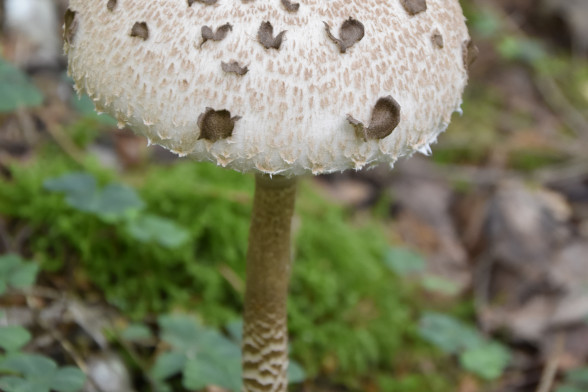
Parasol Mushroom
In Latvia, the parasol mushroom is a moderately common member of the mushroom family, and its fruiting bodies are edible. It holds the distinction of being the largest known cap mushroom in Latvia. This mushroom is typically found in forests, forest edges, clearings, parks, and sunny locations, as it is a light-demanding species. It thrives in sunny places during the summer and autumn, often in environments influenced by human activity, such as old parks, forest edges, roadside areas, meadows, pastures, and clearings. Occasionally, it forms fairy rings.
The cap of the parasol mushroom can grow to be 10-30 cm wide, initially egg-shaped and smooth, later becoming flat with a smooth, firm, brownish center. As it expands, the surface breaks into large, separated, brown, concentrically arranged scales. The flesh is white, with a pleasant smell and a nutty taste.
This mushroom is suitable for frying, with only the caps being used, as the stems are fibrous. Young caps can be eaten fresh. There are other parasol mushrooms, smaller and whiter, including the potentially poisonous garden parasol. However, all other parasol mushrooms that can be confused with this species in Latvia are edible. One distinguishing feature between parasol mushrooms and toxic mushrooms is the absence of dark scales on the cap in the former, which only have white remnants of the veil (volva). Additionally, parasol mushrooms have a swollen base at the stem, a feature absent in toxic look-alikes.
If you have doubts about a specific mushroom while foraging, it is better not to take the risk and leave it behind.

